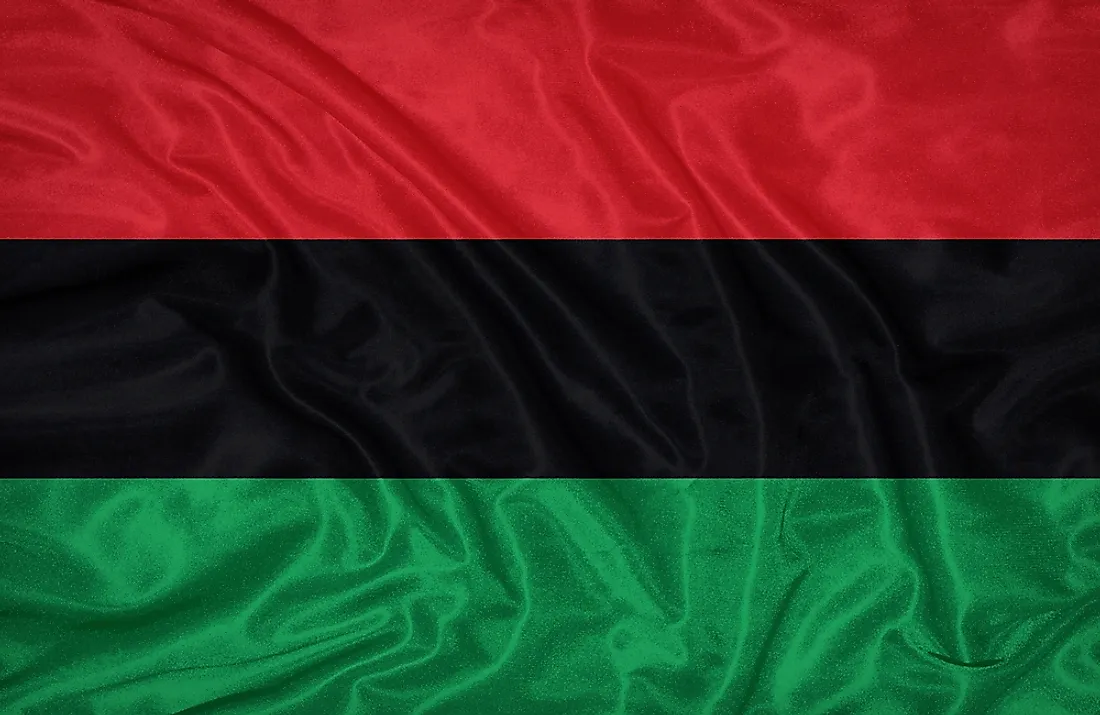What Does The Pan-African Flag Look Like?

The design of the Pan-African flag is a simple one. It consists of three equal horizontal bands of color with red on the top, followed by black in the center, and green at the bottom. Although the colors themselves are simple the meaning behind each shade is complex and has been interpreted many different ways by a variety of people and organizations.
History of the Pan-African Flag
The 1921 Universal Negro Catechism states, for example, that the red color on the flag is in reference to the blood which must be shed in order for the African race to achieve redemption and liberation. The presence of black clearly relates to the imperial and dignified skin color of those members native to the African race. Lastly, the green band at the bottom of the Pan-African flag is a symbol of the natural wealth and abundance of crops grown in this area of the world.
Another explanation for the trio of colors on the flag proposes that journalist/publisher/activist Marcus Garvey, who founded the Universal Negro Improvement Association as well as the African Communities League, chose the colors in order to represent several international cultural struggles taking place around the world. Primarily the flag portrays the fight of the “Reds of the world”, the Negro cause, and finally the use of green is symbolic of the Irish struggle for independence.
At the present time, however, most people agree that the three distinct colors of the Pan-African flag are references to the red blood flowing through all people of Black African heritage, the presence of a black nation state, as well as the natural abundance of flora growing in Africa.
Origins of the Flag
In reaction to a 1900 song known as, "Every Race Has a Flag but the Coon”, prominent members of the black community such as Marcus Garvey began working on designing a flag which would illustrate the history and pride of felt by everyone with shared African origins.
The Pan- African flag was created in 1920 and then was officially adopted on August 13, 1920 by the Universal Negro Improvement Association and African Communities League. This took place during a convention in New York City. The flag’s adoption was part of Article 39 in the Declaration of the Rights of the Negro Peoples of the World.
In the turbulent 60s in America the Pan-African flag took on the status of being a powerful symbol of Black pride. Today the flag is often seen during occasions such as Martin Luther King, Jr. Day as well as playing a key role as part of civil rights rallies.
Other Names for the Flag
As well as being formally known the Pan-African flag this powerful symbol has also been referred to as the Black Liberation Flag, UNIA flag, Afro-American flag, Marcus Garvey flag, Universal African flag, and New Afrikan Liberation flag.
Today a variety of nations on the African continent
fly Pan-African colors. This list includes; Benin, Burkina Faso,
Cameroon, Congo-Brazzaville, Ghana, Guinea, Guinea-Bissau, Kenya, Malawi, Mali,
Mozambique, São Tomé and Príncipe, Senegal, South Africa, Togo, Uganda, and
Zimbabwe. Countries which also include blue in their Pan- African flags include the Central
African Republic, Eritrea, and Ethiopia. The country
of Zambia also incorporates orange into its Pan-African flag design.











